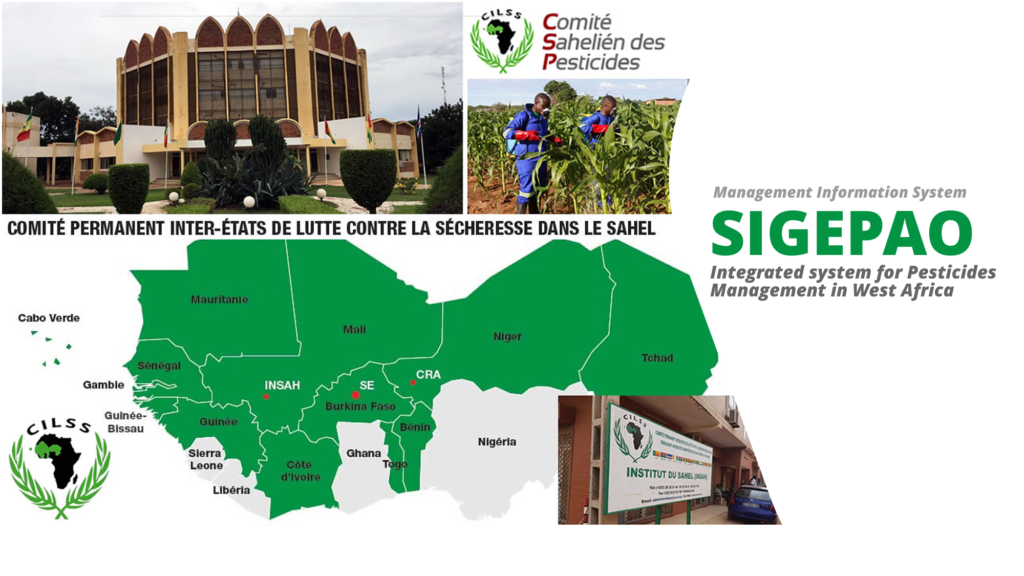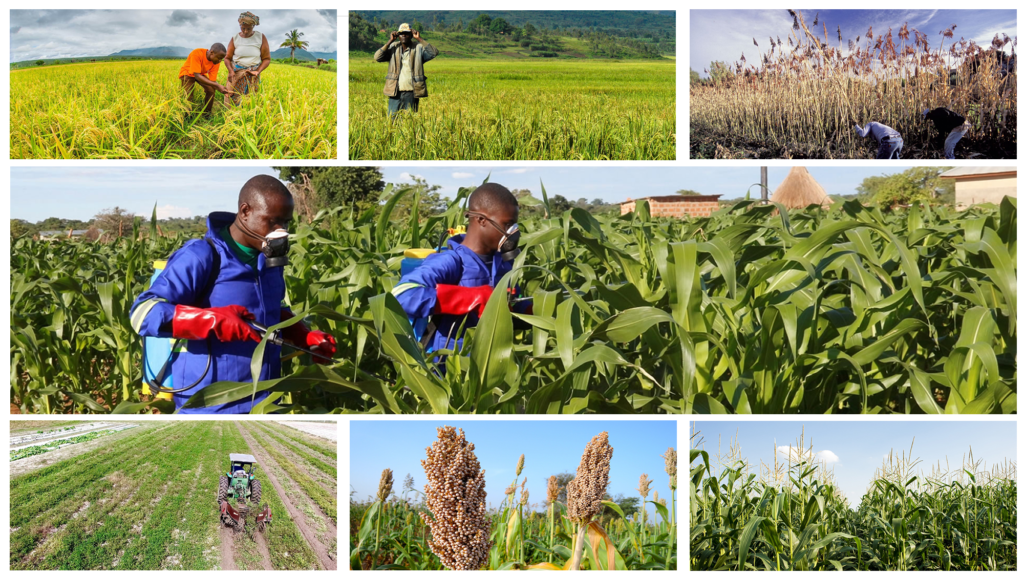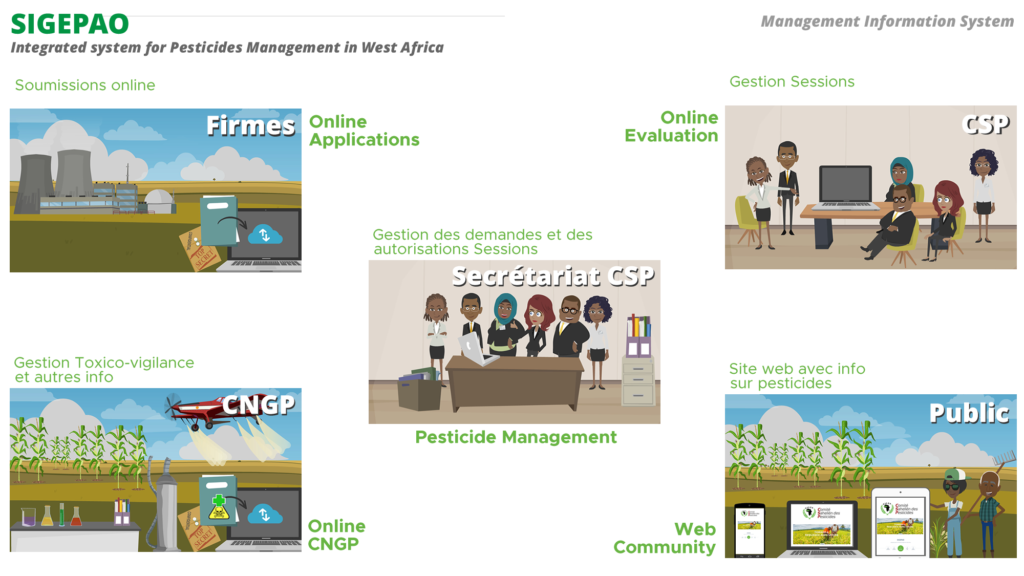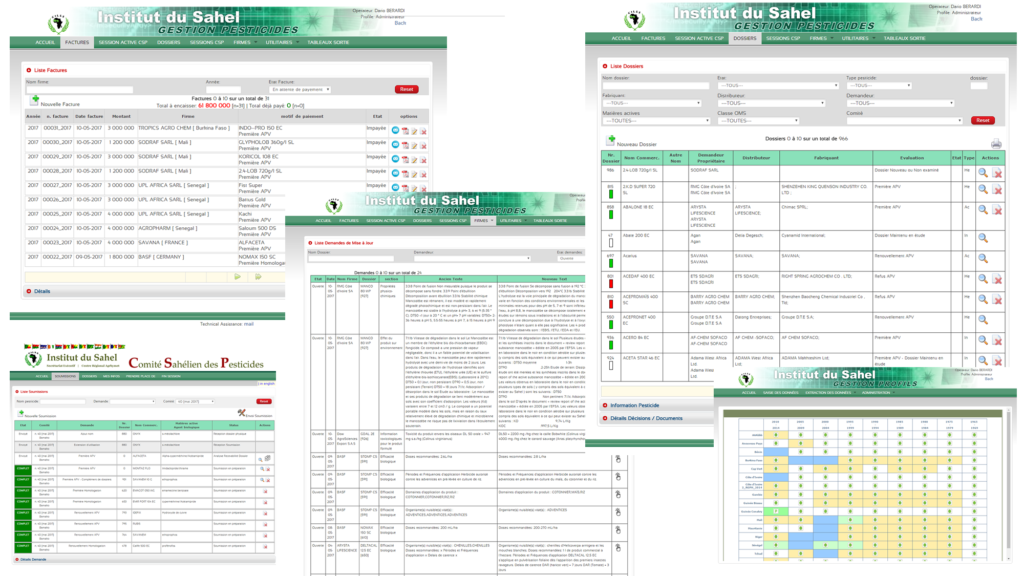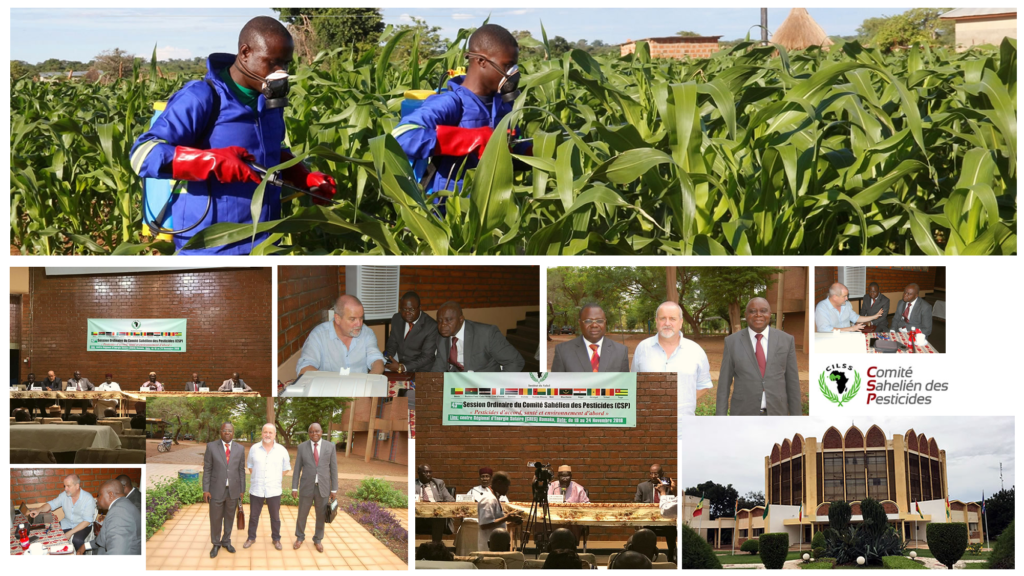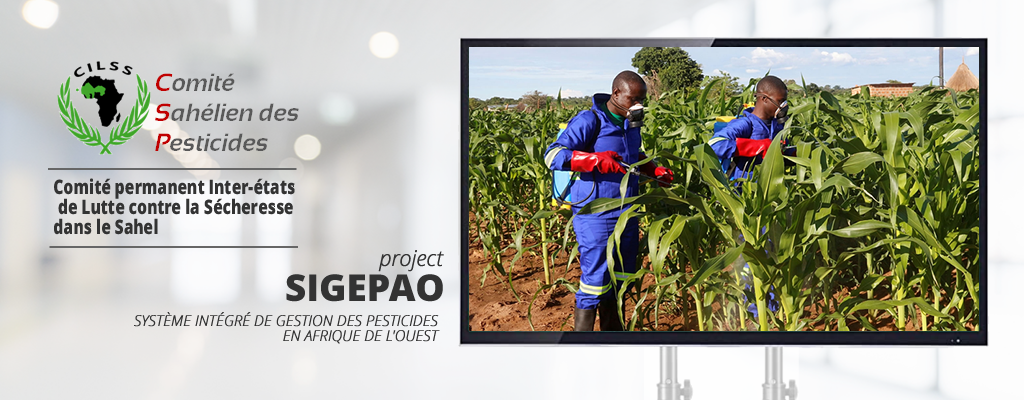
We have published an interview with Dario Berardi, our International Project Area manager. He talks about an African project: the SIGEPAO web system.
Audio: French
Subtitles: English, Italian (you can activate subtitles from Youtube video settings)
In this video we show you the testimonials of many people who worked on the project and who appreciate the benefits of our SIGEPAO Web Platform.
Audio: French
5 QUESTIONS +1
#5QUESTIONSPLUSONE
The B2B interview + the human factor
1. The Customer: Who was the customer of this project?
The client for this project is the Comité Sahélien des Pesticides (Sahelian Pesticide Committee).
The Sahelian Pesticide Committee was created after the major droughts of the 1970s.
These droughts were then followed by a locust invasion, causing great difficulty for all the countries in the area, because, just as they were emerging from a drought, the first harvests were eaten up entirely by the locusts.
Therefore, all the invaded countries started to import large quantities of pesticides to save the harvests.
The countries then decided to get together to try and reduce the impact of the pesticides. This was what led to the creation of the Sahel Pesticides Committee. It is based in the Institut du Sahel (Sahel Institute), in Bamako, Mali, and is part of the CILSS – the Comité Inter-États de la Lutte contre la Sécheresse (Permanent Interstate Committee for Drought Control).
2. The Problem: Which were the customer’s specific needs?
The aim of the Sahelian Pesticide Committee was, or rather is, to approve and authorise the import of pesticides into the Sahel countries.
They started with just a few pesticides but, gradually over the years, use has increased, making it very difficult to manage these authorisations manually.
Hence the need to computerise the whole process, from the request for approval, submitted by companies themselves, to the authorisation, given by the Sahelian Pesticide Committee for all countries in the region, and to the control at national level. This means that once the pesticide is authorised, its use must be monitored in the fields, to see if there are any warnings. This process is called “toxicovigilance monitoring” and it is carried out to see if any problems arise following the use of a specific pesticide. It is done on a national level.
Hence the need for a computerised system, responding to the different needs of the various players involved in the pesticide authorisation process.
3. The Solutions: Which solution did you adopt and how did you apply your working methodology and your skills to solve the problem?
The strategy we have adopted – and I believe it is a winning one – is that we started with the computerisation of one part, one section, one tool. We provided an initial tool and people then started to use and gain familiarity with it. When that happened, we then went on to develop a second module.
So we took a modular approach which has, of course, had some negative effects and, in particular, has greatly slowed down the development of the platform as a whole, but which, ultimately, has allowed the experts, the platform users, to absorb the platform, and to start to understand not only the use of what is called the front end, namely the use of the tool, but, in particular, the logic behind it.
It is a computerisation logic; it is a logic of the integrated system which is not at all obvious. Even in our European countries, there is no custom of working with computerised integrated systems.
And so, therefore, that is the winning strategy; development in small steps, working together over several years.
The first, small, module was developed in 2005 and here we are in 2019 and we have made big strides forward. But it is not yet finished; we are still working and, in particular, we are in the process of implementing the national side.
Recently, I was in Togo to provide training for national users in the country. Today, the fifteen countries in West Africa are involved by this system, so it really is a regional integrated system, with a regional dimension.
4. The Advantages: Which results have been achieved by your web solution?
The web solution: first and foremost, what is it?
It consists of five modules.
The first, which enables firms to make their submission on-line.
The second is a system that allows national experts of the Sahelian Pesticide Committee to evaluate the submissions which have been made by firms, and they do this by using the platform.
They enter comments directly on the platform and the evaluation reports are therefore automatically sent to the firms.
Then, there is the module which manages the dossiers, certificates, authorisations. The production of invoices, all the necessary documentation.
The fourth module is precisely what I was saying just now: the CNGP, that is the National Committee for the Management of Pesticides, to facilitate pesticide monitoring at a national level.
And the fifth module is the website, the site for the general public, which takes certain information, in particular information on authorised pesticides, in order to make it available to farmers, retailers, the population.
What is the real advantage that the client, the Sahelian Pesticide Committee, is starting to have by using this platform?
It is one system, a single database. All five modules use the same database, which allows all the stages to be completed more quickly.
One of the real advantages is the automatic creation of authorisation certificates.
Invoices are produced automatically. So, once a dossier is considered admissible (there is an admissibility analysis of requests), once a request is considered admissible, the system automatically generates an invoice which is automatically sent to the firm.
The firms have their portfolio of different pesticides, the various requests that have been made to the Sahelian Pesticide Committee.
So the whole process is efficient. The possibility of analysing… today we have, I believe, two hundred requests per session. The Sahelian Committee meets twice a year and analyses … each time the requests that arrive regularly from the firms.
Analysing two hundred authorisation requests within the space of a week is a challenge, and it is a challenge which we are winning, thanks, precisely, to the platform, which enormously facilitates the work of everybody, of all the users.
5. The Details: Strengths and weaknesses of the adopted solution
I think that its strength lies in working together continuously throughout the year – not only during the two committee sessions, but throughout the year – so it is the ongoing support given to the client.
So much so that, once again, DEV4U is not really a supplier, a service provider, but rather a partner of the Sahelian Pesticide Committee. We work together; together we identify the needs of the users. Very often, they don’t know what they actually need. They express a need at a level which is not the level required in order to be able to then develop the programs from an IT point of view.
Therefore, an analysis must be carried out in order to understand the need expressed by the user and change it, understand it, modify it, adapt it for computing requirements.
And it is a task that we have been carrying out for fifteen years now… There have been quiet periods, but we have always been there, available to support them, help them understand the need, structure the database, find solutions to operating requirements.
So that, really, I believe is the strength.
The system has been developed very gradually, which has also enabled – this is another strength of the system – the users to take ownership of it. Because it is easy, in inverted commas, to develop an integrated system. I do it in Rome, Brussels, Paris, Washington. I come with my system, I come into the country, that is the system. And then, there is no point, it is not used, the people do not understand the logic. So, you are in a situation where you have to work alongside the users. That is really, I think, how DEV4U, has been able to carry out this support work.
The weakness is always linked to the strength. It is both strength and weakness. The fact of taking small steps forward, first of all, takes time. So, we started in 2005 and now we are in 2019. But another difficulty is in taking one step forward and then the users realised, two years later, that they needed to go two steps back, make changes, in order to be able to resume going forward.
So it is a dance… the development of an integrated system in Africa, I mean. It is a dance which takes place between the developer, the software engineer and the user. You take one step forward, you take two steps back, because there are modifications to be made, you take three steps sideways.
Therefore, it is a slow process, which advances in small steps, but which makes steady progress with the system taking control.
And, let us tell you, we are pleased, today, to know that even large firms, like Bayer, RMG and Monsanto, express their satisfaction with the use of the on-line platform.
+1. The Human Factor: Dario, what is the human factor of this project?
The question is: “Who are the real beneficiaries of this system?”. Not the clients; they are not the beneficiaries. I think there are two main beneficiaries: the environment and the population.
The system is made for the clients, the Sahelian Pesticide Committee, the firms, but it is to try to reduce the harmful impact of pesticides. It would be good to be able to avoid using pesticides.
Especially in environments which are so fragile like the Sahel, the desert, those types of areas, pesticides risk creating more problems than they resolve.
But, unfortunately, agriculture must supply food to an increasing population and, therefore, there is a need, which still exists, to protect crops to increase yield, to increase production. So, as the CSP says, “pesticides are okay, but environment and health first of all”. We want to protect the environment; we want to choose from all the pesticides available that firms offer for use. The Sahel Committee experts choose, trying to choose the pesticides which, at least on paper, have the least impact on the environment and also on health, because, clearly, people who live on the fields have the right to live under healthy conditions, without having to use products which could harm them.
So, the social dimension of this project is enormous. It is the Sahel’s environment and population.
Discover the pages of our solutions:
Our website:
